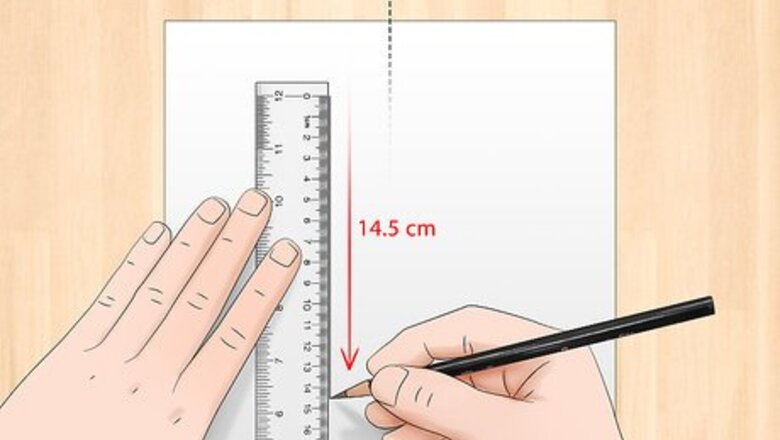
views
Forming the Outline
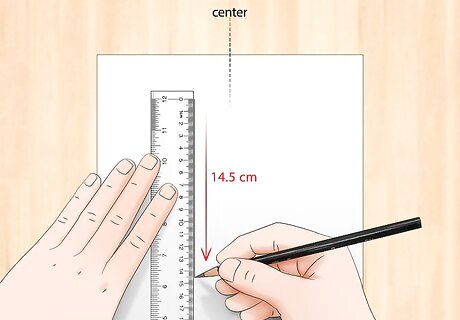
Use a ruler to draw a vertical line going down your paper. Start with a blank piece of paper, a ruler, and a pencil. Draw a vertical line slightly to the left of the center of the page about 14.5 cm (5.7 in) long. For your line to be off-center slightly, begin drawing it roughly two-fifths of the way across the top of the page. Draw the line lightly so that you can erase it later on.
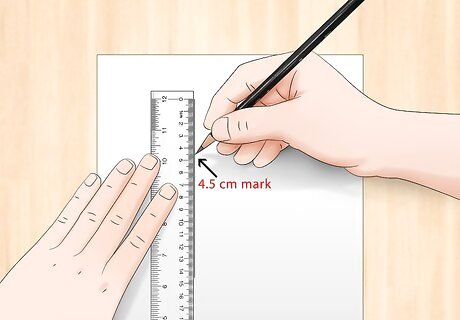
Make a dot on your line at the 4.5 cm (1.8 in) mark. Draw a light dot or tick mark 4.5 cm (1.8 in) from the top of the line. This dot is a reference point for where to place your ruler for the next horizontal mark, so mark it lightly but visibly.
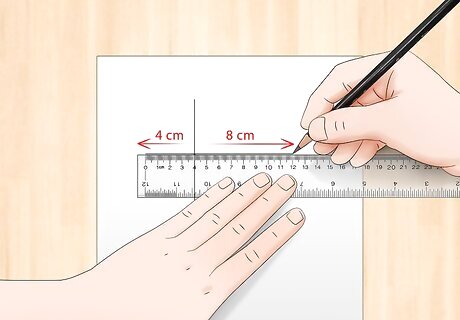
Draw a horizontal line across the dot. Use your pencil and ruler to draw a straight horizontal line that extends 4 cm (1.6 in) to the left of the mark and 8 cm (3.1 in) to the right of the mark. Your lines will form a rough cross shape.
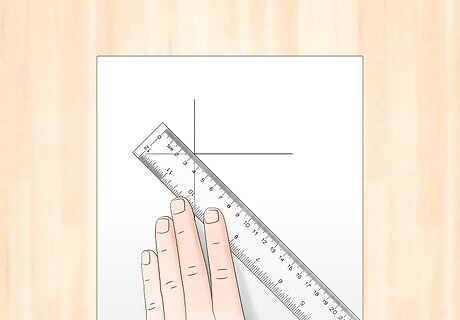
Orient the ruler diagonally going from the top left to the bottom right. Locate the center point on your drawing where both lines converge and place your ruler along this dot. Twist your ruler so that it’s running diagonally across the page.
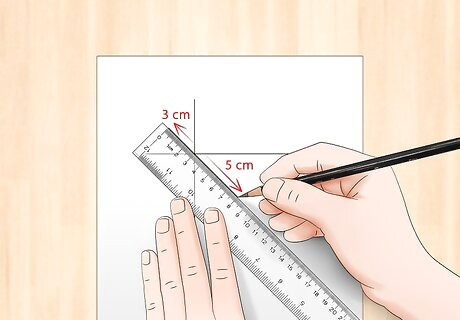
Draw a line that’s 8 cm (3.1 in) long. Align the ruler diagonally so that there's 3 cm (1.2 in) to the left of the center dot and 5 cm (2.0 in) to the right of the center dot. Use your pencil to make the line. Once you’re finished, your new line will slope straight downwards.
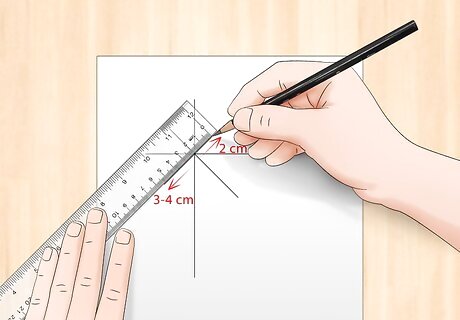
Make a diagonal line going in the opposite direction. Reposition your ruler and create a new diagonal line that extends 2 cm (0.79 in) to the right of the center mark and 3–4 cm (1.2–1.6 in) to the left. This line should form the other half of an "X" shape from the first diagonal line.
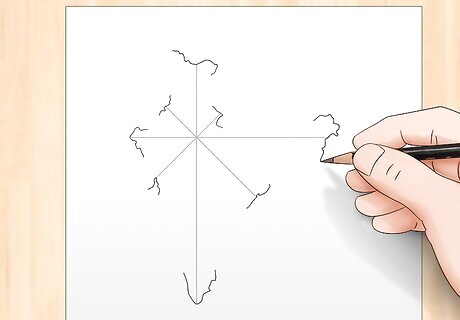
Use the sketched lines as a guide for where to draw the edges. You should now have 4 lines total: a long line vertically, a long line horizontally, and 2 diagonal lines that form a stubby X. The tips of these lines show you the boundary of India, or where the outline of your drawing will extend. While India will have lots of complex curves when you draw it in detail, this is its simplified shape.
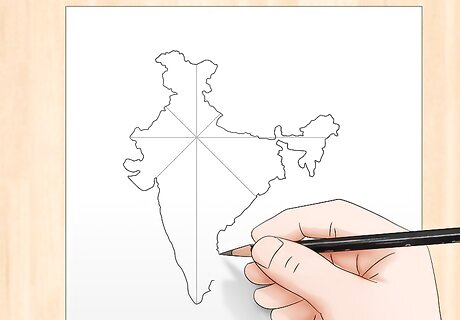
Use curved lines to create the border of India. The outline of India is almost entirely made up of detailed curves, both big and small. To draw your map accurately, refer to a map of India to see where exactly the curves swoop inwards and outwards, as well as how close together or far apart they should be. For example, the bottom portion of India looks like a V shape while the portion of India farthest to the left looks like a backwards 3. While these are the simplified shapes of each section, they all have small curves.
Adding the Details
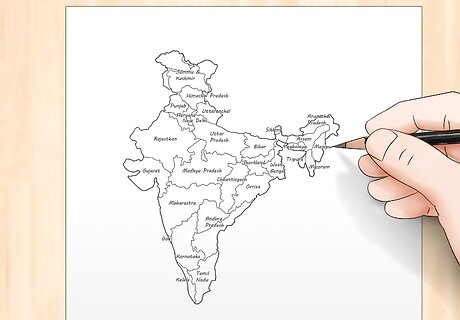
Draw the states and union territories of India to show boundary lines. India has 28 states and 8 union territories. All of the states and union territories are made up of detailed curved lines of different shapes and sizes, making it difficult to draw without referring to a picture of India’s states already drawn. Find a picture of India with all of the states clearly pictured and practice drawing them on your own map. When figuring out how large or small to draw each state, use the eraser on your pencil or the tip of your finger as a measuring tool. For example, you might measure and find out that the length of India is 27 pencil erasers, and the first state that goes along this length is 3 pencil erasers long. If desired, label each state after you’ve drawn them all in, writing each state’s name. For example, you might label Andhra Pradesh, which is on the coast of India to the southeast, or Punjab, which is towards the northernmost tip of India.
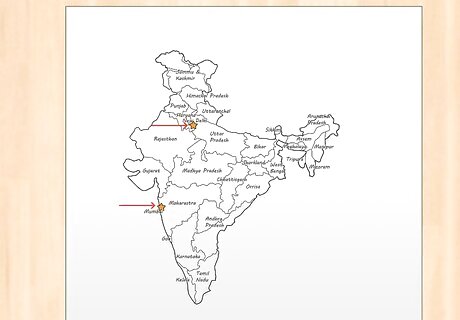
Create dots or stars to mark the main cities in India. Some of the major cities in India include Mumbai, which is on the western coast of India a little more than halfway down the length of it, and New Delhi, which is towards the top middle of India. Decide which cities you’d like to include on your map, drawing a star, dot, or other symbol to show where they’re located. Kolkata is located near the eastern tip of India, and Bangalore is in the middle of the bottom tip of India. Hyderabad is roughly three-quarters of the way down the middle of India going vertically.
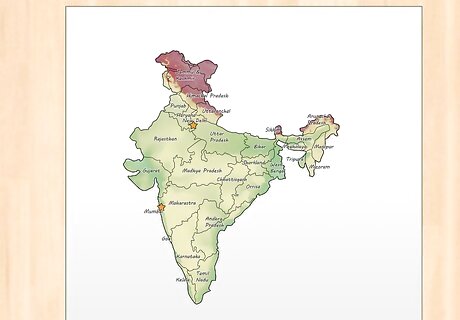
Illustrate the topography of India to show land contours. Use different colors to show the different elevations of India. Areas of very high altitude might be purple, while areas of average altitude are yellow, and areas of low altitude are green. For example, color in the Himalayan mountains area, which is the northernmost point of India, a dark purple to show a very high elevation. The entire coast of India with the exception of the Himalayan mountains is a very low elevation. The middle of India and the southernmost area of India both have mountain ranges of average elevation.
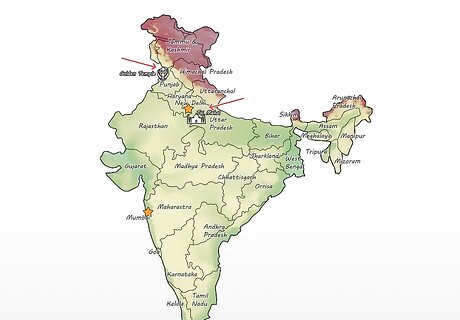
Draw small pictures to show important landmarks. If you want to add some creativity to your map, choose major landmarks of India, such as the Taj Mahal, Golden Temple, or Amber Fort, and draw a small picture of them where they’re located. After drawing the simple picture, you can label the landmark too, if desired. Consider putting the pictures of the landmarks in a key to the side of your map so you don’t need to write the names of each landmark directly on the map. For example, you might draw a simple outline of the Taj Mahal and place it 1–2 cm (0.39–0.79 in) above the center of India.
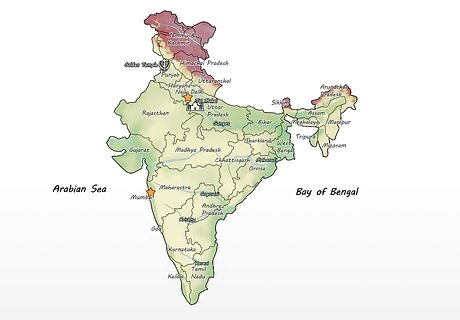
Label any rivers or oceans to show the bodies of water. Draw lines in the shape of rivers to show where they’re located in India, and write the names of the oceans surrounding India. You can even use a blue pencil or pen to make it clearer that you’re depicting water. You might label the Arabian Sea to the left of India, the Bay of Bengal to the right of India, and the Indian Ocean at the bottom of India. The Ganges river flows diagonally along the upper right section of India. The Narmada, Tapti, Krishna, and Kaveri rivers all flow horizontally across India.
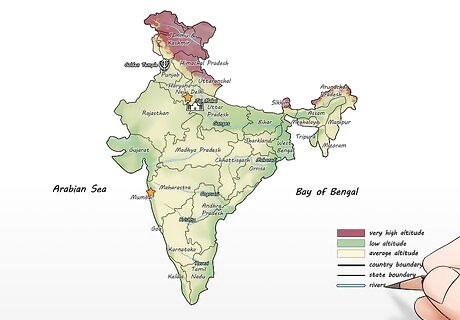
Make a key for your map so people can read it easily. Your key will tell your map viewers what any symbols mean, such as a squiggly blue line portraying a river or a star signifying a city. Draw a box to the right of your map and put any symbols in the box that you show in your map, writing what the symbol means to the right of each one. In your key you might draw a picture of the Taj Mahal and write “Taj Mahal” next to it, or draw dotted lines and write “state boundary” next to it.
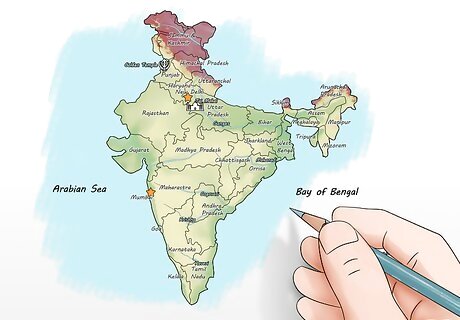
Color your map to make states, landmarks, or bodies of water stand out. Use crayons, colored pencils, or markers to enhance your map. Color each state a different color, or color in rivers and oceans a blue color to represent water. If you added landmarks to your map, add details using different colors. For example, color the states using colors like red, yellow, purple, and green.




















Comments
0 comment